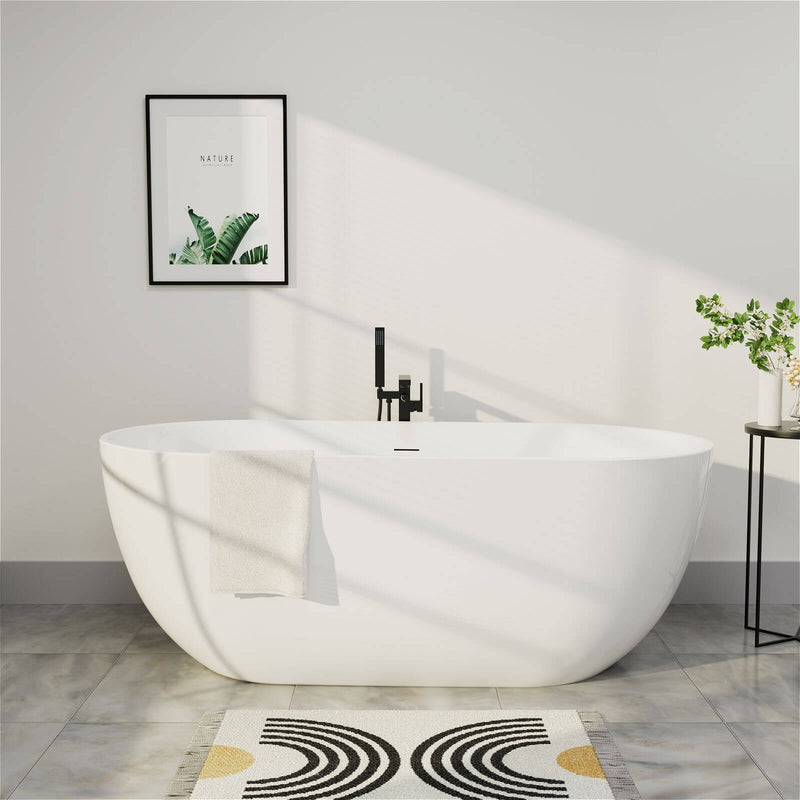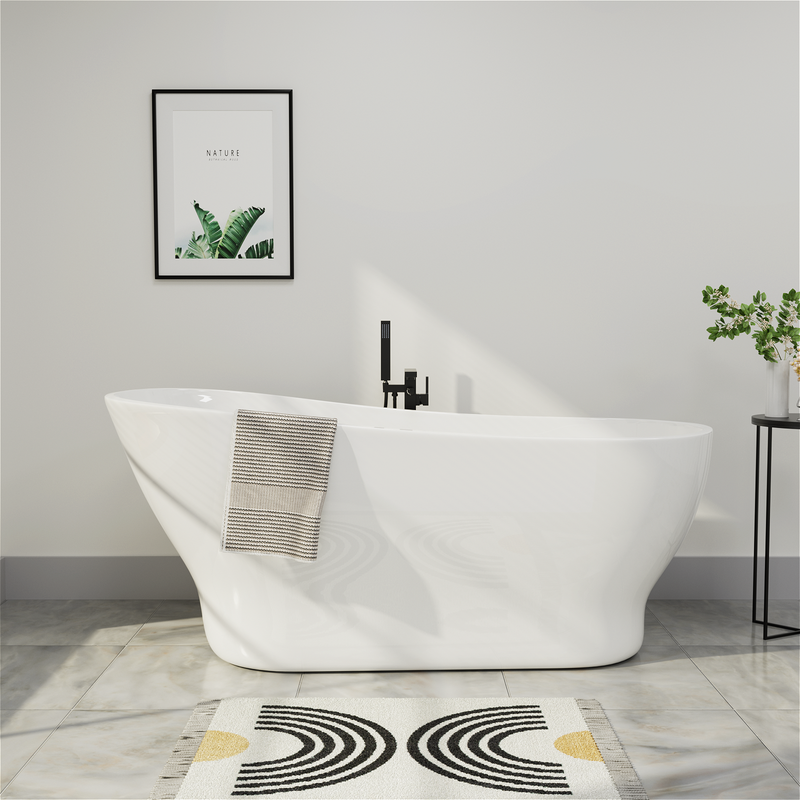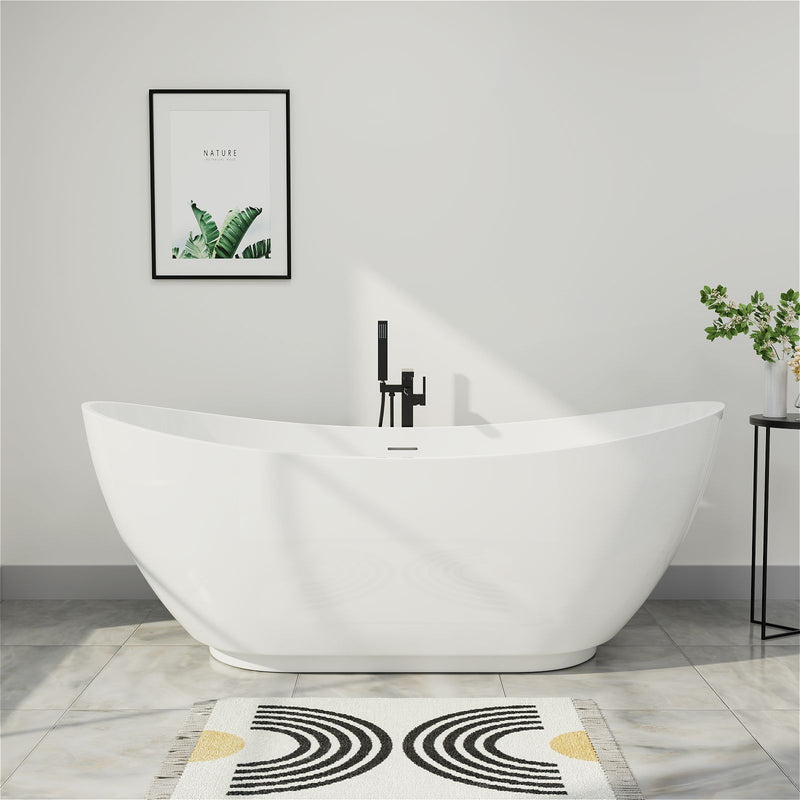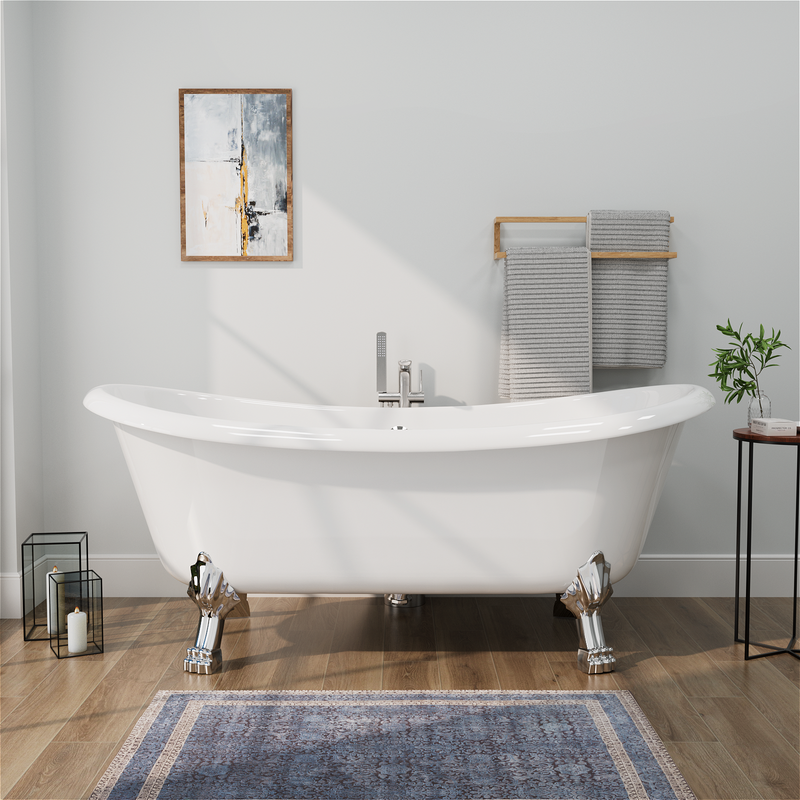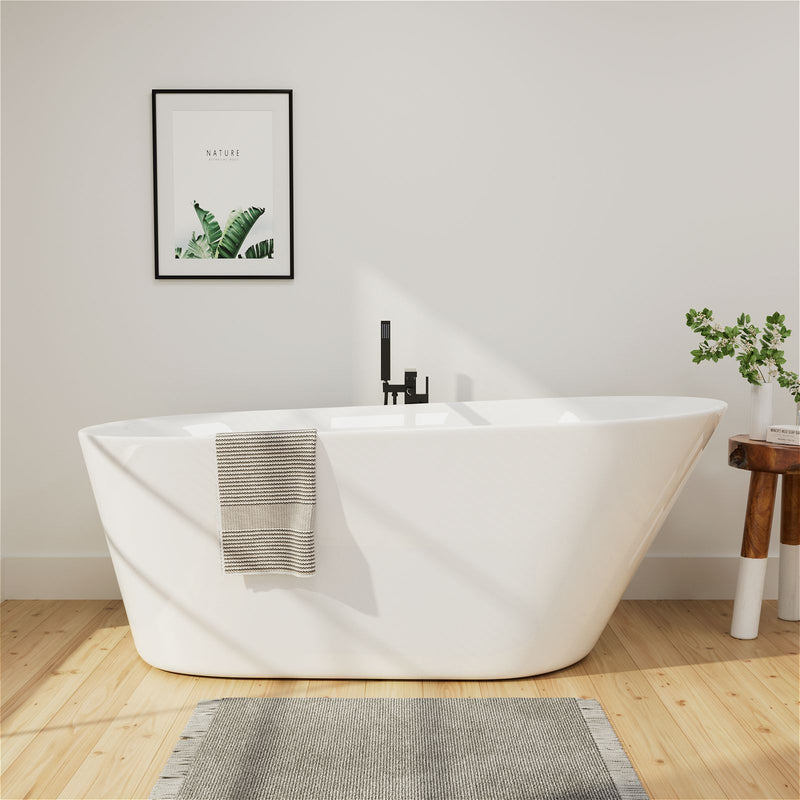The pursuit of creating a personal sanctuary within the home has led to a growing appreciation for bathroom designs that prioritize both wellness and efficiency. Among these, the Japanese soaking tub with a seat stands out as a pinnacle of thoughtful design, merging deep relaxation with practical space-saving benefits. Unlike traditional Western bathtubs that encourage reclining, these tubs are designed for a seated, upright soaking experience, allowing for full immersion in a compact footprint. This design is not merely a trend but a reflection of a centuries-old bathing culture that values ritual, tranquility, and therapeutic benefits. For homeowners seeking to transform their bathroom into a spa-like retreat, especially those working with limited space, understanding the features and advantages of a Japanese soaking tub with a built-in seat is the first step toward achieving a truly rejuvenating bathing experience. This comprehensive guide explores the ergonomic benefits, key design features, and practical considerations of these unique tubs, providing valuable insights for anyone considering an upgrade to their bathing routine.
The Ergonomic Design and Space Efficiency of Japanese Soaking Tubs
The defining characteristic of a Japanese soaking tub with a seat is its ergonomic design, which is centered on providing maximum comfort in a minimal amount of space. These tubs are notably deeper than standard Western bathtubs, with depths often exceeding 29 inches. This significant depth allows water to completely cover the shoulders of a seated bather, creating a truly immersive and warming experience that helps soothe muscles and relieve tension. The built-in seat or integrated bench is not an afterthought but a fundamental part of the design, offering a stable and comfortable perch for extended soaks.

The space efficiency of these tubs makes them exceptionally well-suited for modern bathrooms, particularly in urban homes where square footage is at a premium. While a standard bathtub might require a substantial footprint for reclining, a Japanese soaking tub utilizes a compact, vertical design. This allows it to fit snugly into smaller bathrooms or even in spaces where a conventional tub would be impractical, such as in converted closets or under sloped ceilings. The inclusion of a seat eliminates the need for separate bathing furniture, further streamlining the space. This intelligent use of verticality means that even with its generous soaking depth, the overall footprint of the tub can be surprisingly small, with some models measuring as little as 43 inches in length and width. This makes the Japanese soaking tub an ideal solution for creating a luxurious bathing experience in guest bathrooms, master suites, or any area where optimizing space is a key consideration.
Key Features and Material Choices
When selecting a Japanese soaking tub with a seat, the material and construction play a crucial role in both its performance and longevity. These tubs are crafted from advanced materials that offer superior heat retention, durability, and ease of maintenance.
High-Quality Acrylic and Composite Materials
Many modern Japanese-style soaking tubs are constructed from high-gloss acrylic or proprietary composite materials. These materials are inherently non-porous, which makes them highly resistant to stains, mildew, and the accumulation of water scale. This non-porous nature also translates to effortless cleaning, requiring only a soft cloth and mild cleaner to maintain its glossy finish. Unlike traditional materials, high-quality acrylic is also lightweight, making it easier to install, especially in upper-floor bathrooms. Despite its light weight, when reinforced, it offers excellent structural integrity and can comfortably support the weight of a bather and the water.
Built-in Seating and Ergonomic Contours
The integrated seat is the centerpiece of the design. It is typically a molded part of the tub's interior, providing a stable and secure platform for bathing. Many models enhance this feature with ergonomic backrests and even headrests, allowing the bather to lean back in complete comfort during a long, relaxing soak. This thoughtful contouring supports the natural curve of the spine, reducing pressure on the back and joints—a significant advantage for older adults or those with mobility concerns. The seamless, continuous interior surfaces not only enhance comfort but also make the tub easier to clean compared to models with complex jet systems or sharp corners.
Advanced Heating and Water Circulation
Staying true to traditional Japanese bathing culture, some high-end models incorporate advanced water heating and circulation systems. Inspired by the traditional Japanese oidaki method, these systems gently heat and circulate the water, maintaining a constant, optimal temperature—typically around 104°F (40°C)—for the entire duration of your bath. This innovative feature means you can enjoy a prolonged soak without the water turning cold, eliminating the need to drain out cool water and add more hot water. This not only enhances the luxuriousness of the experience but also promotes water conservation.
Health and Wellness Benefits
The benefits of a Japanese soaking tub with a seat extend far beyond its elegant design and space-saving qualities. The practice of deep, seated soaking offers profound therapeutic advantages for both physical and mental well-being.
Therapeutic Heat and Hydrotherapy
The core of the bathing experience is full-body immersion in warm water. This practice has been shown to have significant circulatory benefits. The combination of water temperature and hydrostatic pressure helps to improve blood circulation, delivering more oxygen to muscles and aiding in the removal of metabolic waste products. This process can lead to reduced muscle soreness, faster recovery from physical exertion, and relief from joint pain. A long-term study conducted in Japan even suggested that the practice of daily tub bathing is associated with a 28% reduced risk of heart attack and stroke, highlighting the profound cardiovascular benefits of this ritual.

Mental Relaxation and Stress Relief
In today's fast-paced world, the bathroom has become one of the last true sanctuaries in the home. The seated, upright position in a deep soak encourages a state of mindfulness and calm. The quiet, solitary environment allows the bather to disconnect from digital distractions and daily stresses. According to surveys, a significant majority of Japanese bathers cite relaxation and relief from fatigue as their primary reasons for soaking. The warm water helps to lower cortisol levels, the body's primary stress hormone, and promotes the release of endorphins, creating a natural sense of tranquility and well-being. This daily ritual can serve as a powerful tool for managing stress and improving overall mental health.
Safety and Accessibility
The built-in seat is also a critical safety feature. It provides a stable place to sit while entering or exiting the tub, significantly reducing the risk of slips and falls—a common concern in wet bathroom environments. This makes the Japanese soaking tub an excellent choice for households with elderly members or individuals with limited mobility. The seat allows them to bathe independently and safely, without the strain of lowering themselves to the bottom of a deep tub or the danger of standing for a shower. For families with young children, the seat provides a secure spot for a child to sit during bath time.
Design and Installation Considerations
Integrating a Japanese soaking tub into your bathroom requires careful planning to ensure it complements your space and meets your functional needs.
Freestanding vs. Built-In Models
Japanese soaking tubs are available in two primary styles: freestanding and built-in. Freestanding models are self-contained and can be installed anywhere in the bathroom, provided the floor can support the weight and there is access to plumbing. They often serve as a striking focal point. Built-in or drop-in models are designed to be installed within a surrounding platform or deck, which can be tiled or finished to match your bathroom's decor. This option allows for a more customized, integrated look and can sometimes include built-in storage or steps.
Planning for Space and Plumbing
Before purchasing, precise measurements are essential. While these tubs are compact, you must account for the tub's footprint as well as adequate clearance for access and cleaning. It is also crucial to verify that your bathroom floor is structurally sound to support the significant weight of the tub, the water, and the occupant. For a filled soaking tub, this weight can easily exceed 1,000 pounds. Furthermore, the unique plumbing requirements, especially for models with integrated water heating systems, often make professional installation highly recommended. A licensed plumber can ensure all connections are watertight and that the installation complies with local building codes.

Complementing Your Bathroom Aesthetic
The minimalist and sculptural lines of a Japanese soaking tub allow it to blend seamlessly with a variety of design styles. It can serve as a centerpiece in a minimalist, Zen-inspired bathroom or provide a striking contrast in a more industrial or contemporary setting. The simplicity of the tub's form means it can be accentuated with natural materials like wood (such as a teak step) or stone to enhance the serene, spa-like atmosphere.
FAQs
How is a Japanese soaking tub with a seat different from a standard Western bathtub?
The primary differences are in the bathing position and depth. Japanese tubs are designed for a seated, upright soak and are much deeper to allow for full immersion. Standard Western tubs are longer and shallower, designed for reclining. The Japanese tub's compact, vertical footprint also makes it more space-efficient.
Are these tubs suitable for small bathrooms?
Absolutely. Their compact and vertical design is specifically intended to maximize bathing experience in a minimal footprint. Many models are engineered to fit into spaces where a standard tub would not, making them an ideal luxury solution for smaller bathrooms.
What is the typical capacity of these tubs?
While they are deeper, their smaller surface area often results in a comparable or even lower water usage than a standard tub. Capacities vary by model, but a typical Japanese soaking tub might hold around 76 gallons. Their efficient design often means you use less water than filling a large, standard bathtub.
How does the built-in seat enhance safety?
The integrated seat provides a stable and secure spot to sit while entering or exiting the tub, greatly reducing the risk of slipping. It also allows older adults or those with mobility issues to bathe without having to lower themselves all the way to the floor of the tub.
Can I install a Japanese soaking tub myself?
Due to the significant weight when filled and the potential complexity of plumbing connections (especially for models with heating systems), professional installation is strongly advised. A qualified plumber can ensure the floor is properly reinforced and all connections are secure and leak-free.
Do these tubs have any therapeutic benefits?
Yes. The deep soak in hot water helps improve blood circulation, soothe aching muscles, and relieve stress. The hydrostatic pressure of the water can also help reduce swelling and improve joint mobility. Furthermore, the ritual of quiet soaking is a proven method for mental relaxation.
Conclusion
The Japanese soaking tub with a seat represents a perfect synergy of form and function, offering a deeply therapeutic and space-conscious bathing solution. Its ergonomic design, centered on a built-in seat within a deep basin, provides unparalleled comfort and safety, making it suitable for bathers of all ages and abilities. The advanced materials used in its construction ensure durability, easy maintenance, and excellent heat retention, enhancing the overall bathing experience. Beyond the physical comforts, this style of tub embraces a holistic approach to wellness, promoting both cardiovascular health and mental tranquility through the timeless ritual of deep soaking. By thoughtfully considering the design, material, and installation requirements, you can successfully integrate this beautiful and functional centerpiece into your bathroom, creating a personal retreat that offers daily luxury and lasting value.

